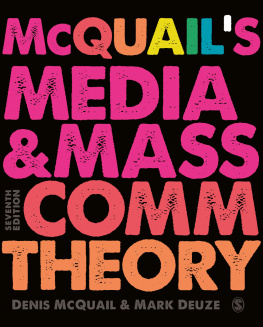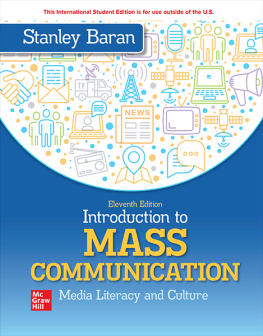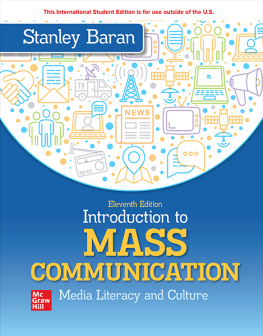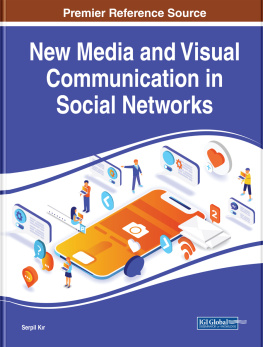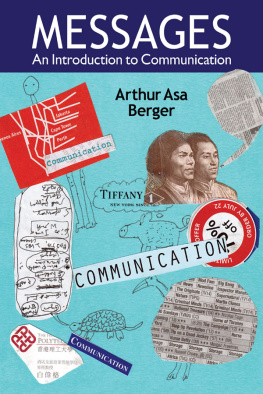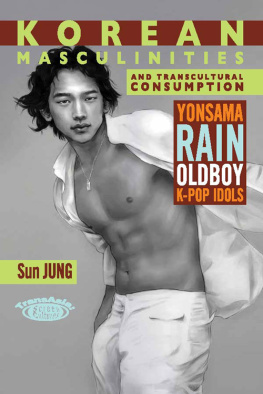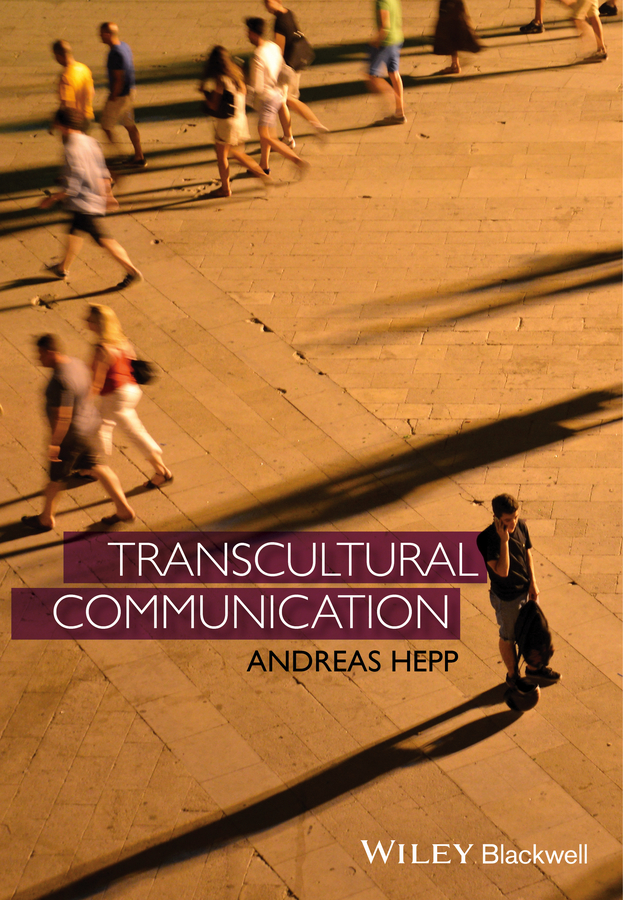
CONTENTS
List of Tables
- Chapter 02
- Chapter 03
- Chapter 04
- Chapter 05
- Chapter 06
List of Illustrations
- Chapter 02
- Chapter 03
- Chapter 04
- Chapter 05
- Chapter 06
Guide
Pages
Transcultural Communication
Andreas Hepp
This edition first published in English 2015
2015 John Wiley and Sons, Inc.
Edition history: German-language publication 2014 UVK Verlagsgesellschaft mbH, Konstanz and Munich
Registered Office
John Wiley & Sons Ltd, The Atrium, Southern Gate, Chichester, West Sussex, PO19 8SQ, UK
Editorial Offices
350 Main Street, Malden, MA 02148-5020, USA
9600 Garsington Road, Oxford, OX4 2DQ, UK
The Atrium, Southern Gate, Chichester, West Sussex, PO19 8SQ, UK
For details of our global editorial offices, for customer services, and for information about how to apply for permission to reuse the copyright material in this book please see our website at www.wiley.com/wiley-blackwell.
The right of Andreas Hepp to be identified as the author of this work has been asserted in accordance with the UK Copyright, Designs and Patents Act 1988.
All rights reserved. No part of this publication may be reproduced, stored in a retrieval system, or transmitted, in any form or by any means, electronic, mechanical, photocopying, recording or otherwise, except as permitted by the UK Copyright, Designs and Patents Act 1988, without the prior permission of the publisher.
Wiley also publishes its books in a variety of electronic formats. Some content that appears in print may not be available in electronic books.
Designations used by companies to distinguish their products are often claimed as trademarks. All brand names and product names used in this book are trade names, service marks, trademarks or registered trademarks of their respective owners. The publisher is not associated with any product or vendor mentioned in this book.
Limit of Liability/Disclaimer of Warranty: While the publisher and author have used their best efforts in preparing this book, they make no representations or warranties with respect to the accuracy or completeness of the contents of this book and specifically disclaim any implied warranties of merchantability or fitness for a particular purpose. It is sold on the understanding that the publisher is not engaged in rendering professional services and neither the publisher nor the author shall be liable for damages arising herefrom. If professional advice or other expert assistance is required, the services of a competent professional should be sought.
Library of Congress Cataloging-in-Publication Data applied for
9780470673935 (hardback)
9780470673942 (paperback)
A catalogue record for this book is available from the British Library.
Cover image: Photo Beate C. Koehler
Introduction
In his wide-ranging history of communication, Marshall T. Poe has almost euphorically described the present as an epoch of mediatized transculturality. While the eras of the printing press and audiovisual media were characterized by tolerance and multiculturalism, Poe argues that we are now moving into an era that is beyond culture (Poe 2011: 240). He suggests that, in the future, identities will no longer be so firmly linked to historical (national) cultures, but instead to a mix of diverse historical and new, invented cultures. An example of this is what he calls the transnational identities of different subcultures. These already existed outside the Internet (and are lived beyond it) but the emergence of the latter made access to them much easier. Hence the current transformation of media furthers the emergence of a transcultural everyday life. Poe cites, as proof of this, the book Transculturalism, a collection edited by Claude Grunitsky, a creative entrepreneur and son of the Togolese ambassador. Here transculturalism is described as a way of life within which some individuals find ways to transcend their initial culture, in order to explore, examine and infiltrate foreign cultures (Grunitzky 2004: 25). The ongoing transformation of the media is therefore associated with an entirely new way of living and experiencing culture, and this new way of life is captured by the concept of transculturalism.
If we pay attention to the media we might detect other aspects of transculturality. Among these are the transcultural conflicts that organizations have to confront and manage, but also the transcultural conflicts between the West and the Rest (Hall 1992a). We are not only aware of such transcultural conflicts through various forms of media, from the World Wide Web to more traditional forms of mass media such as television and newspapers; media can themselves become driving forces in transcultural conflicts. One leading example of this was the uproar created in 2006 by the publication of cartoons of the prophet Mohammed (Eide et al. 2008), followed by protests in the so-called Arab world and a subsequent public discussion of Islam and religious values in Europe. The cartoons were published by the Danish newspaper Jyllands-Posten with the deliberate intention of creating controversy. This incident serves to illustrate the perspective of a certain media outlet on a foreign culture. People in the Arab world found out about these cartoons, likewisefrom a critical dossier circulated among Islamic preachers, from the Internet, from reports by Al Jazeeraand various forms of protest followed. These were then the subject of reporting by European mass media, coupled with commentary that, in some cases, sought to distance itself from the issue. The transcultural communication made possible by the globalization of media thus led to conflicts between religions and cultures, and did not necessarily enhance mutual understanding.
This and similar examples make clear how complex and many layered the phenomenon of transcultural communication is. They draw attention to the need for differentiated knowledge of the possibilities and limits of processes of transcultural media communication if one is to give due regard to the ongoing globalization of media communication. Transcultural communication affects us all when we are confronted with media products on television, in the cinema and in the press that travel beyond the bounds of different cultures. It affects us when we come into contact with people of different cultures over the Internet. In what way, and by which businesses, are these transculturally accessible media products produced? What is the relationship between media policy and the activity of global media corporations? What is the nature of transcultural media products? How are they taken up and appropriated? How does this all relate to the way we communicate across cultures using social media? What kinds of theories and approaches can help us develop a critical perspective on that? These are the questions that I hope I can at least begin to answer in this book; but before I provide a brief overview of the book as a whole, I would like to make a few remarks about the concept of transcultural communication.
As will be seen in the following pages, the concept of transcultural communication is part of a continuing academic discussion of globalization and mediatization. It cannot therefore be adequately defined in two or three sentences. Here in this introduction we can offer at most a degree of orientation. It should already be clear that the objects of analysis here are mediated forms of transcultural communication, and not face-to-face interactions between individuals. This is because
Next page

